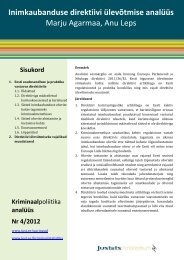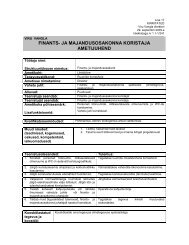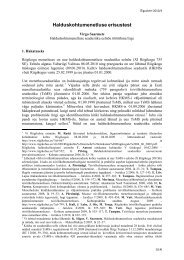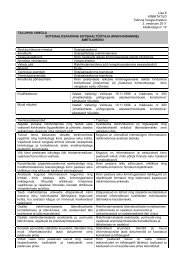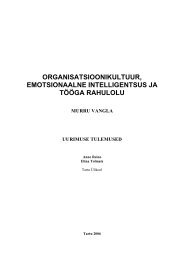Kannatanu kriminaalmenetluses - Justiitsministeerium
Kannatanu kriminaalmenetluses - Justiitsministeerium
Kannatanu kriminaalmenetluses - Justiitsministeerium
Create successful ePaper yourself
Turn your PDF publications into a flip-book with our unique Google optimized e-Paper software.
Estonian criminal law does not provide such instrument but similar testimony is not<br />
forbidden.<br />
Victim supporters movements are very common in the USA and they have an influential<br />
voice when it comes to enacting victims’ rights. In 2004 the Crime Victims’ Rights Act<br />
(CVRA) was approved by the Senate. This statute gives victims a set of rights, most of them<br />
are service rights. The CVRA is primarily based on the victim’s right to be treated with<br />
fairness and with respect for the victim’s dignity and privacy. These rights are now enforced<br />
effectively by the US courts.<br />
As noted earlier, the CCP is obscure when it comes to defining the role of the victim.<br />
Although crime victims in Estonia are not as powerful force as in the USA, they are eager to<br />
put their rights in use. But this is impeded by the poor regulation in the CCP. First of all, the<br />
legislator has to decide whether the victim is a party to a court proceeding or not, keeping in<br />
mind the procedure’s adversarial style. Secondly, the rights of the victims must be formulated<br />
clearly and simply. The easiest way to grant victims their rights is to take example from the<br />
core of the CVRA: victims need fairness and respect. All in all it is not important if a victim<br />
cannot cross-examine the accused. To avoid secondary victimisation, victims of crime need to<br />
feel that they are necessary and not ostracised. That enables them to agree with the output of<br />
criminal proceedings better.<br />
56



